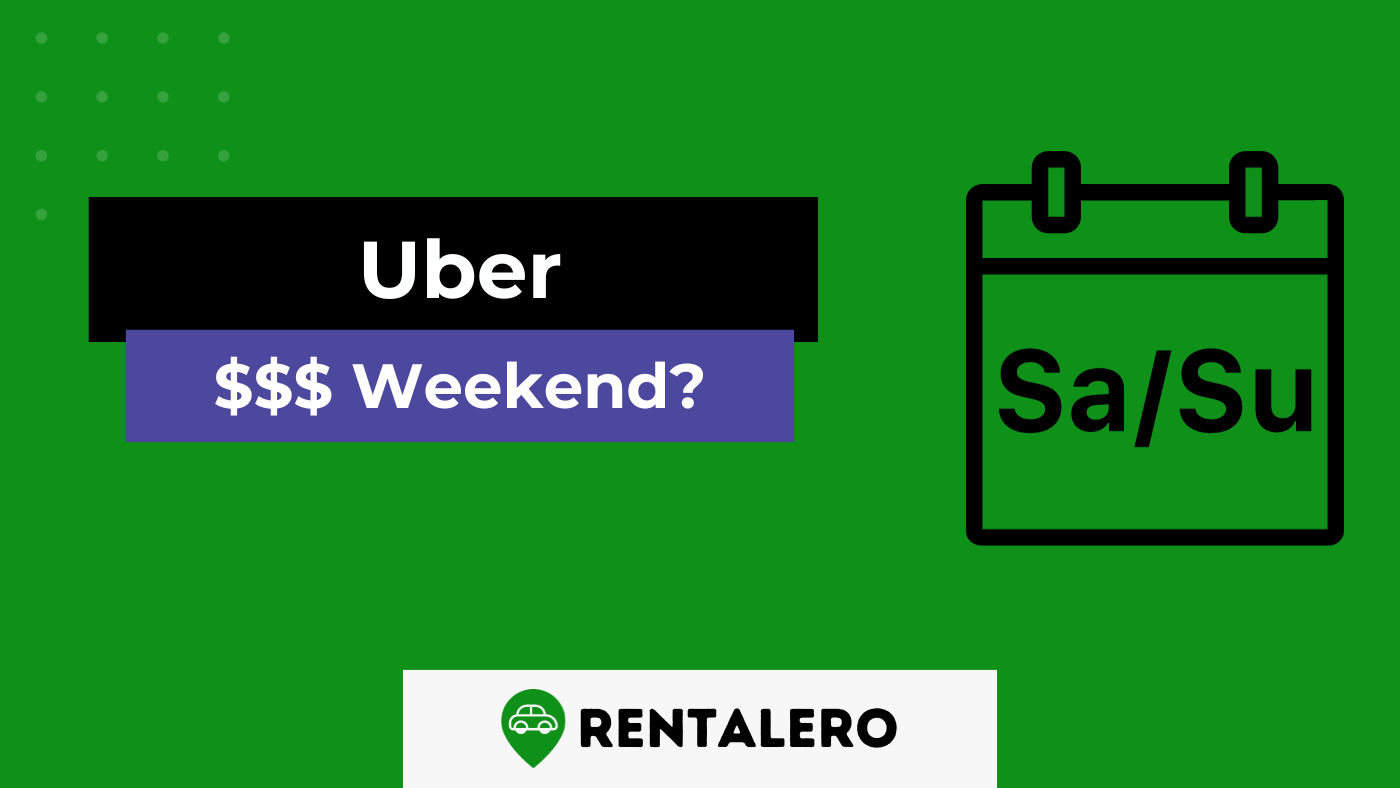Earning with Uber, particularly on weekends, can significantly boost your income. But how much exactly can you make?
This article will give you a clear picture of what you can earn as an Uber driver on weekends. We will be focusing on:
- The various factors that can affect your Uber earnings.
- The typical hourly rate for an Uber driver.
- Strategies to maximise your earnings above average.
In a nutshell, after reading this, you’ll have a clear roadmap on how to maximise your income as an Uber driver, particularly on weekends.
Let’s Go!
Advertising links are marked with *. We receive a small commission on sales, nothing changes for you.
Key Takeaway
- Your location, driving strategy, and utilisation of Uber promotions significantly influence your potential earnings as an Uber driver.
- The average hourly earning for an Uber driver is between $ 15 and $22, but strategic driving during peak times and in bustling cities can push this higher.
- Managing your driving hours and idle time is crucial to maximising earnings, with weekends, particularly evenings, being the most profitable times.
- Uber’s service fee, usually around 25%, can take a significant portion of your earnings, especially on shorter, lower-priced rides.
- Armed with the right strategies and an understanding of Uber’s financial model, you can effectively increase your income as an Uber driver.
Factors Influencing Uber Earnings
Before maximising your Uber earnings, it’s essential to understand the main factors.
Three big influencers shaping your income as an Uber driver are your location, driving strategies, and Uber promotions. Let’s break these down one by one for a clear understanding.
Location
The first and one of the most influential factors affecting your earnings as an Uber driver is your location. Different cities have different demands and rates for Uber rides.
For instance, bustling urban areas like New York City and Los Angeles typically have higher ride demand, leading to increased earnings for drivers. Conversely, quieter suburban or rural areas might see less demand and lower earnings.
Driving Strategies
The second crucial factor in the earnings equation is your driving strategy. By this, we mean how you use your time and resources to maximise your Uber driving gig.
Knowing when and where to drive can substantially impact your earnings.
For example, weekends, especially evenings, are peak times for ride requests. Positioning yourself in busy areas during these times can help increase your ride requests and, thus, your earnings.
Likewise, understanding the ebb and flow of your city’s traffic and activity can help you anticipate busy times and places, allowing you to optimise your driving hours.
Uber Promotions
Lastly, Uber offers various promotions that can further boost your earnings. These promotions often include surge pricing during busy periods or special bonuses for completing a certain number of rides.
Taking full advantage of these promotions is key to maximising your earnings. This might mean adjusting your schedule to be on the road during peak hours or pushing yourself to complete that extra ride to earn the bonus.
The difference between an average and a top earner often lies in understanding and strategically using these promotions.
Keeping an eye out for these opportunities and being ready to grab them can significantly increase your earnings.
Average Earnings Of Uber Drivers
Uber drivers typically earn around $15-$22 per hour. Of course, this varies based on location, time of day, and the driver’s strategy. But generally, that’s what you can expect to make per hour.
Bear in mind this is gross income. The net income will be lower after accounting for expenses like fuel, car maintenance, and taxes.
You must consider these costs as an independent contractor when calculating your earnings.
Potential For Higher Earnings In Major Cities
Certain urban areas, particularly bustling cities like New York City and Los Angeles, present opportunities for higher earnings.
In cities where ride demand is high, earnings can rise to around $30 per hour or even more during peak hours or special events when surge pricing comes into play.
While these metropolitan hubs offer the chance for higher income, they also come with increased competition among drivers.
Therefore, strategic planning and a sound understanding of market dynamics are vital for success.
Driving Hours And Earnings
Knowing how much you could potentially earn is essential, but it’s also crucial to understand how your driving hours relate to those earnings.
Optimal Driving Time
Strategic timing is a key factor if your goal is to maximise your earnings. Most drivers’ prime hours fall between 7 p.m. and 3 a.m., particularly on weekends.
This period often aligns with a high ride demand – people go out for the evening or head home after a night out.
You can often make up to $300 on a good weekend night during these hours.
However, remember that this is a rough estimate and can vary based on several factors, such as your location, whether there’s a special event happening, or if surge pricing is in effect.
Idle Time And Earnings
Not all your driving time will be spent with a passenger in your car. There will inevitably be periods where you’re waiting for a ride request or driving towards a passenger’s pick-up point.
This is known as ‘idle time,’ an important aspect to consider when calculating earnings.
Understanding and managing your idle time can be a significant game-changer.
Positioning yourself in busy areas or working during peak hours can help minimise this downtime, ensuring you earn as much as possible.
Uber’s Service Fee And Its Impact On Earnings
Understanding Uber’s financial model is integral to maximising your earnings as a driver. One of the critical components in this model is Uber’s service fee, which directly impacts your earnings.
Uber’s Service Fee
To facilitate its platform, Uber charges drivers a service fee. This fee has often been claimed as 25% of the ride fare. However, it’s important to note that this percentage can sometimes be more than 25%.
The exact percentage can vary based on many factors, including your location, the number of rides you have completed, and the service you provide (like UberX, UberXL, Uber Black, etc.).
The service fee is automatically deducted from each fare you earn, so it’s not something you have to pay out of pocket. Instead, you’ll notice it as a reduced amount in your earnings.
Service Fee Impact On Earnings
The way Uber’s service fee structure is set up means that when the ride fare is lower, Uber’s relative commission is higher. This can lead to lower earnings for you, the driver.
Let’s consider an example. Suppose you complete a $10 ride. If Uber’s service fee is 25%, they will take $2.50. But if the fare is $5 for a shorter ride, Uber’s 25% service fee becomes $1.25.
While the absolute dollar amount of Uber’s fee is lower in the second case, the relative commission (i.e., the proportion of the fare taken by Uber) becomes more significant as the fare decreases.
This means that shorter, lower-priced rides can result in a lower take-home amount for drivers. It’s a factor to consider when evaluating the profitability of your Uber driving gig.
Conclusion
Earning as an Uber driver, especially on weekends, can be a game-changer. The potential to boost your income is real. But remember, your earnings aren’t just about the number of rides.
It’s about the strategy. Your location, driving strategy, and the use of Uber promotions can shape your income.
Understand how Uber’s service fee works. It can be a chunk of your earnings, especially on shorter rides. Plan your driving hours strategically. Peak hours, such as weekends, can increase your earnings.
Manage your idle time wisely to maximise your active earning time.
Ultimately, being an Uber driver offers a flexible way to earn. With the right strategies, you can maximise your income.
Frequently Asked Questions
What is the average hourly rate for an Uber driver?
The average hourly rate for an Uber driver typically ranges between $15 and $22. However, this can vary based on several factors, such as location, time of day, and the driver’s strategy.
What factors affect an Uber driver’s earnings?
Location, driving strategies, and utilisation of Uber promotions influence an Uber driver’s earnings.
For instance, bustling urban areas typically yield higher earnings, and strategically positioning yourself during peak hours can boost income.
Additionally, Uber offers promotions that can enhance earnings if strategically used.
How does Uber’s service fee impact my earnings?
Uber charges a service fee, often around 25% of the ride fare, which is deducted from your earnings. Depending on several factors, the fee can sometimes be more than 25%.
When the ride fare is lower, the relative proportion taken by Uber as their fee is higher, which can decrease your take-home earnings.
Can I earn more by driving in specific cities or at certain times?
Your earnings can increase if you drive in bustling cities like New York City or Los Angeles due to higher ride demand. Similarly, driving during peak hours, particularly on weekends from 7 p.m. to 3 a.m., can boost your income due to higher ride requests.
What can I do to reduce my idle time as an Uber driver?
To reduce idle time, position yourself in busy areas during peak hours for more ride requests. Understanding your city’s activity and traffic patterns can also help you anticipate busy times and places, ensuring you optimise your driving hours and increase your earnings.

Nzoputa has been writing for Rentalero since day one and is one of our most experienced members when it comes to the rental industry. For her, nothing beats Uber!
Advertising links are marked with *. We receive a small commission on sales, nothing changes for you.


